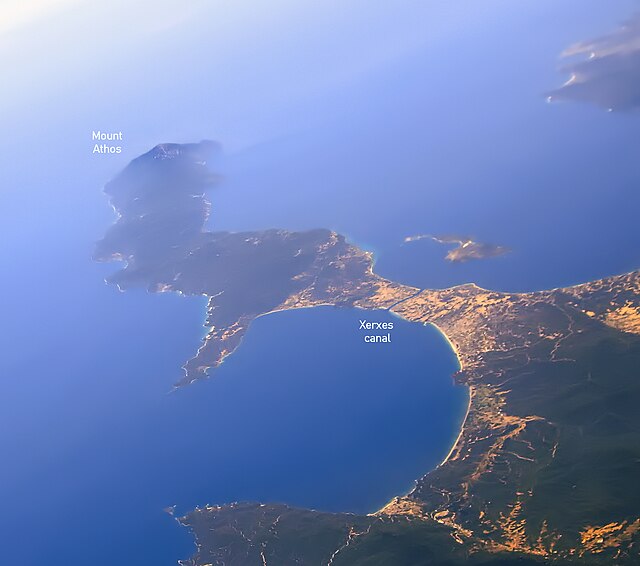The Battle of Artemisium or Artemision was a series of naval engagements over three days during the second Persian invasion of Greece. The battle took place simultaneously with the land battle at Thermopylae, in August or September 480 BC, off the coast of Euboea and was fought between an alliance of Greek city-states, including Sparta, Athens, Corinth and others, and the Persian Empire of Xerxes I.
Beach at Cape Artemisium. Magnesia in the distance.
Departure of the Grecian fleet for Thessaly.
The Ionian fleet, here seen joining with Persian forces at the Bosphorus in preparation of the European Scythian campaign of Darius I in 513 BC, was part of the Achaemenid fleet at Artemisium. 19th century illustration.
Sketch reconstruction of a Greek Trireme
Second Persian invasion of Greece
The second Persian invasion of Greece occurred during the Greco-Persian Wars, as King Xerxes I of Persia sought to conquer all of Greece. The invasion was a direct, if delayed, response to the defeat of the first Persian invasion of Greece at the Battle of Marathon, which ended Darius I's attempts to subjugate Greece. After Darius's death, his son Xerxes spent several years planning for the second invasion, mustering an enormous army and navy. The Athenians and Spartans led the Greek resistance. About a tenth of the Greek city-states joined the 'Allied' effort; most remained neutral or submitted to Xerxes.
Second Persian invasion of Greece
The Spartans throw Persian envoys into a well.
Rendition of the Xerxes Canal (seen from north), built over 3 years from 483 BC across the Mount Athos peninsula. It is now filled-up.
Preparations of the army of Xerxes, with quarters in Sardis in 481–480 BC, and crossing of the Hellespont at Abydos.








